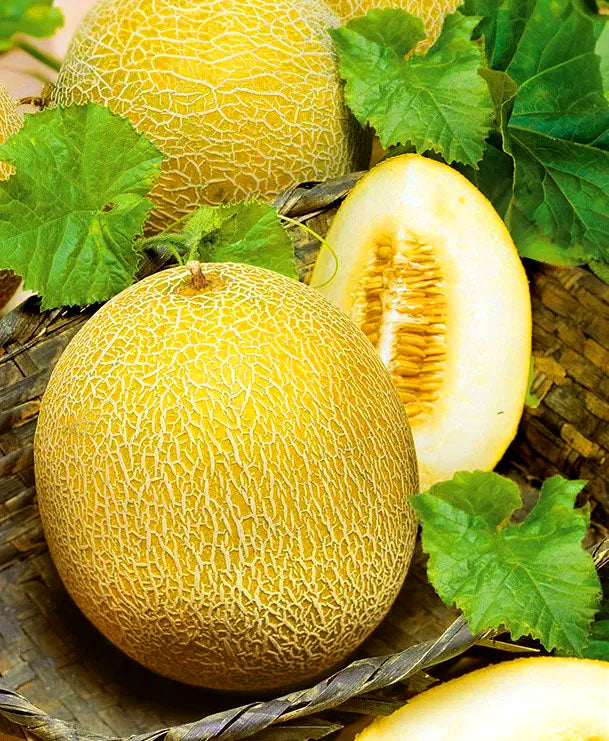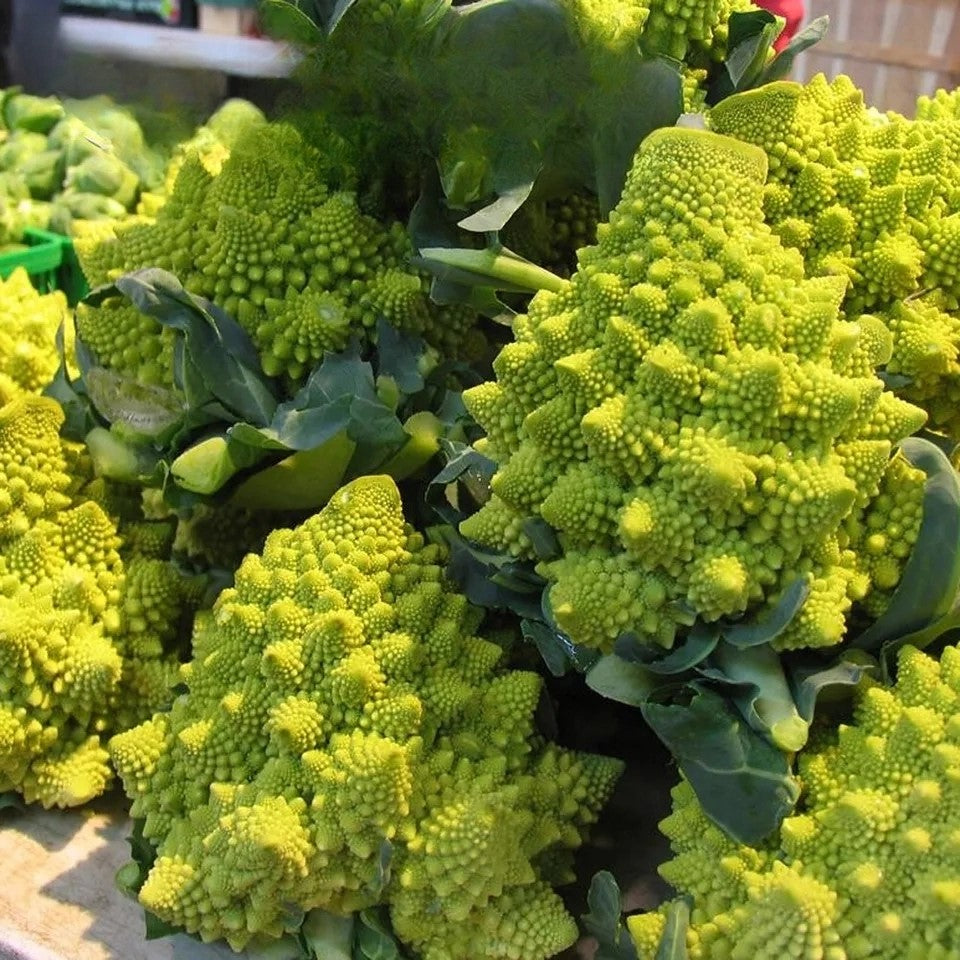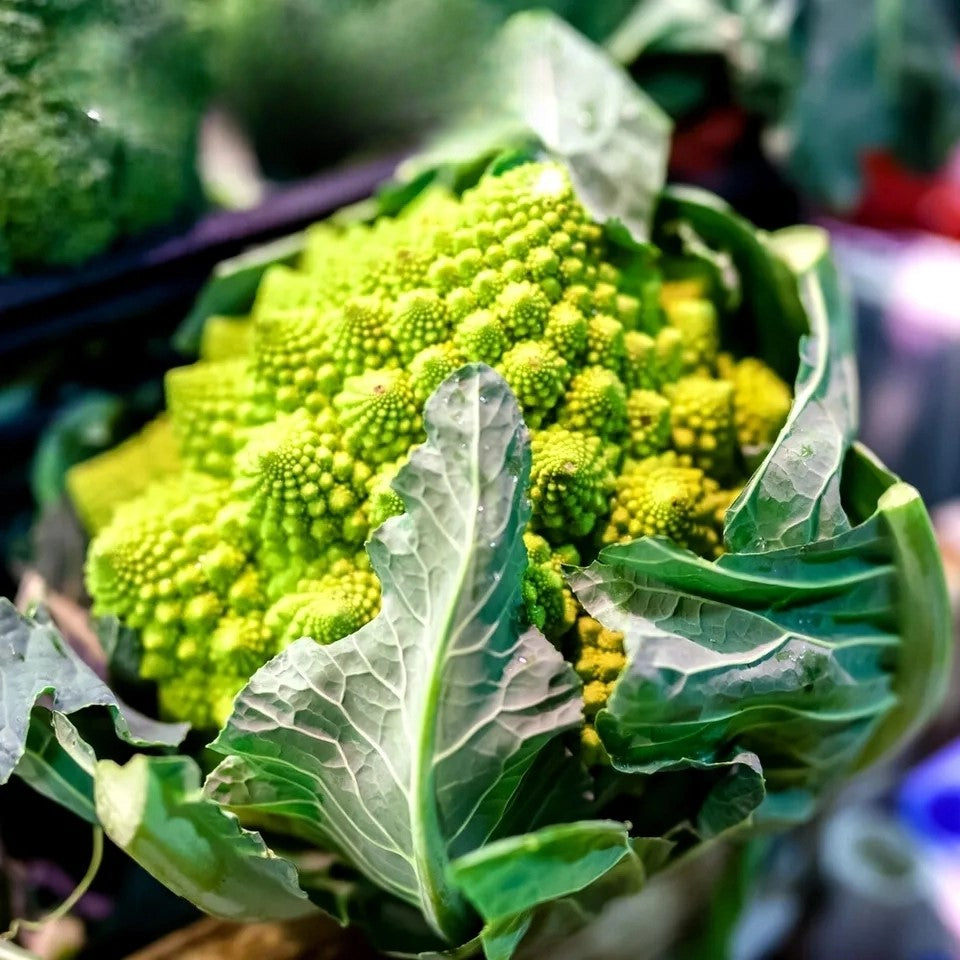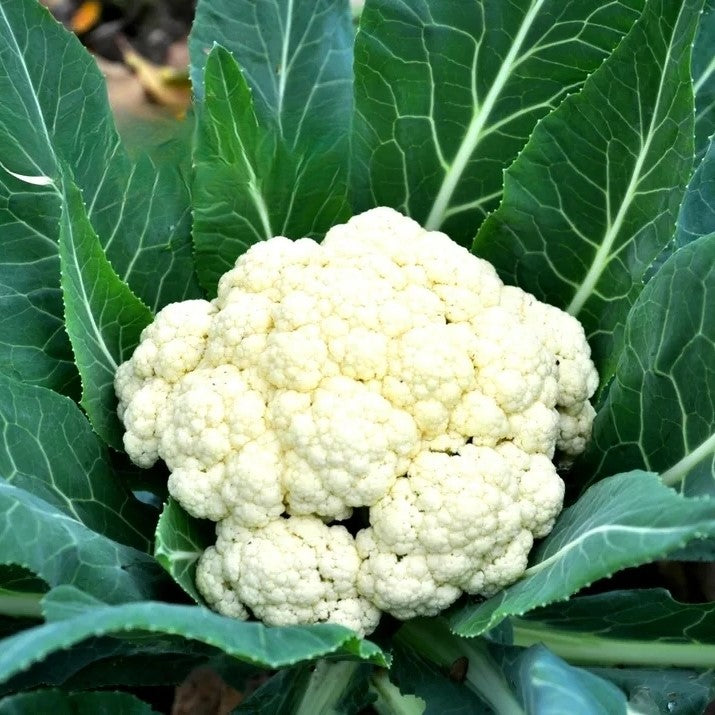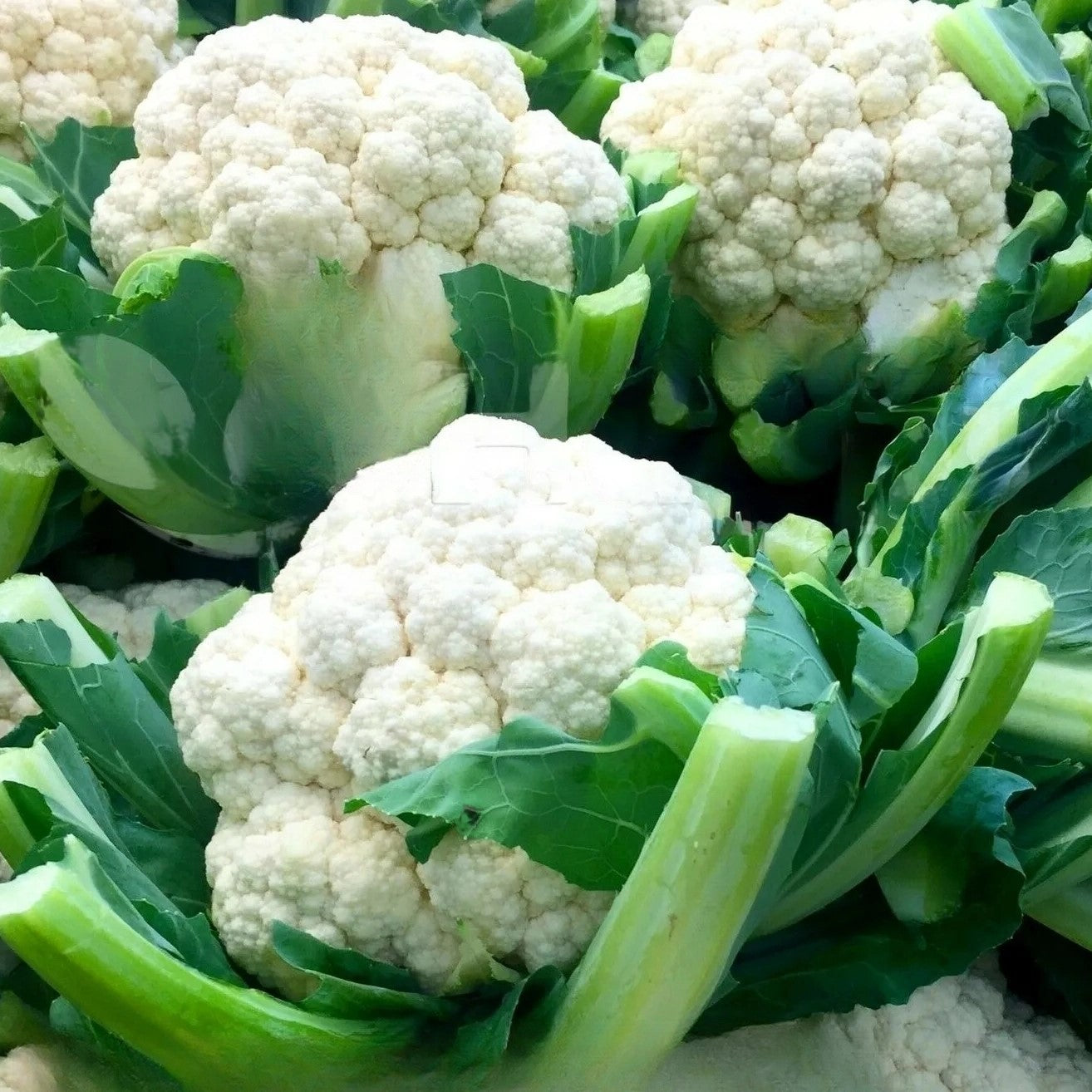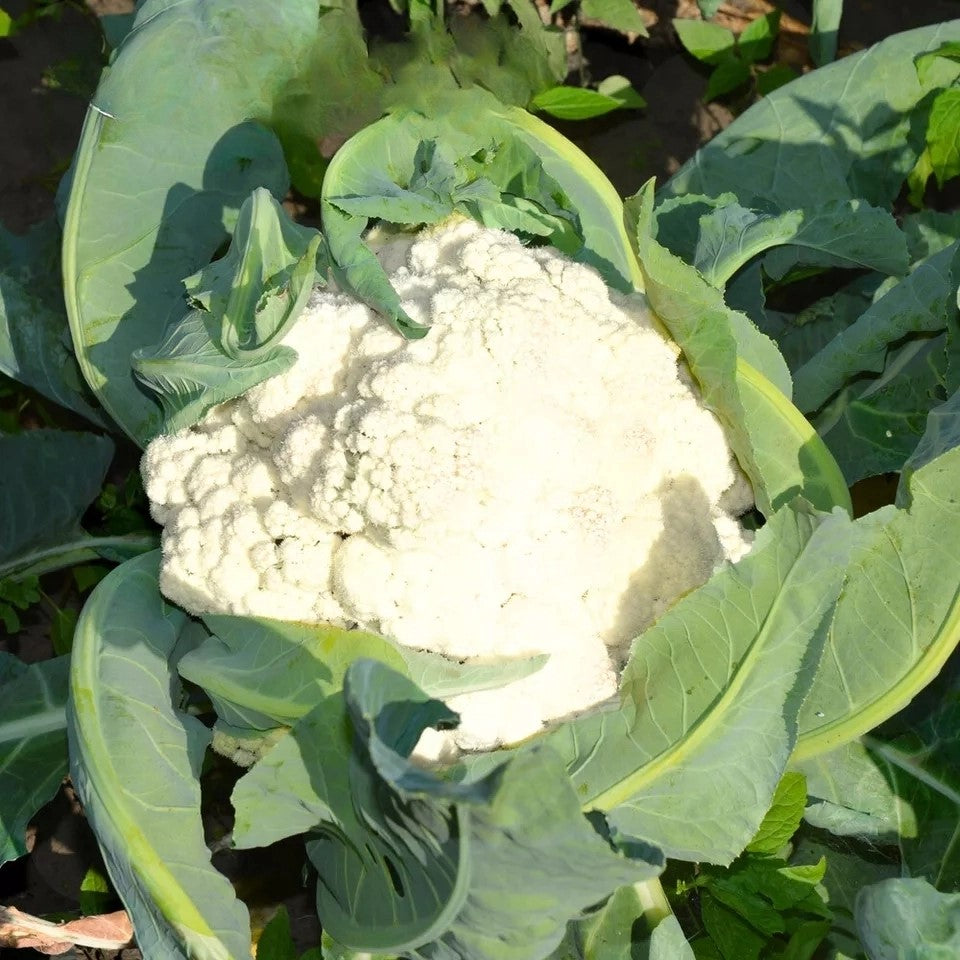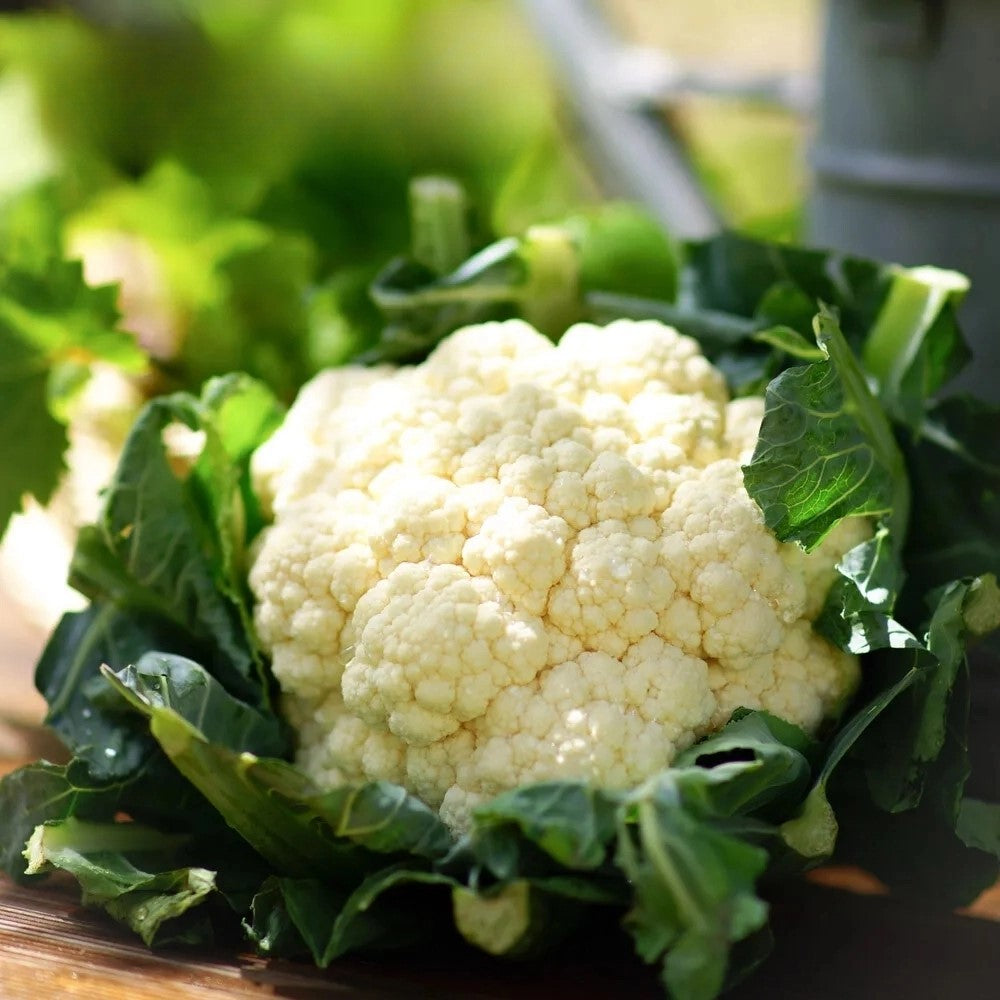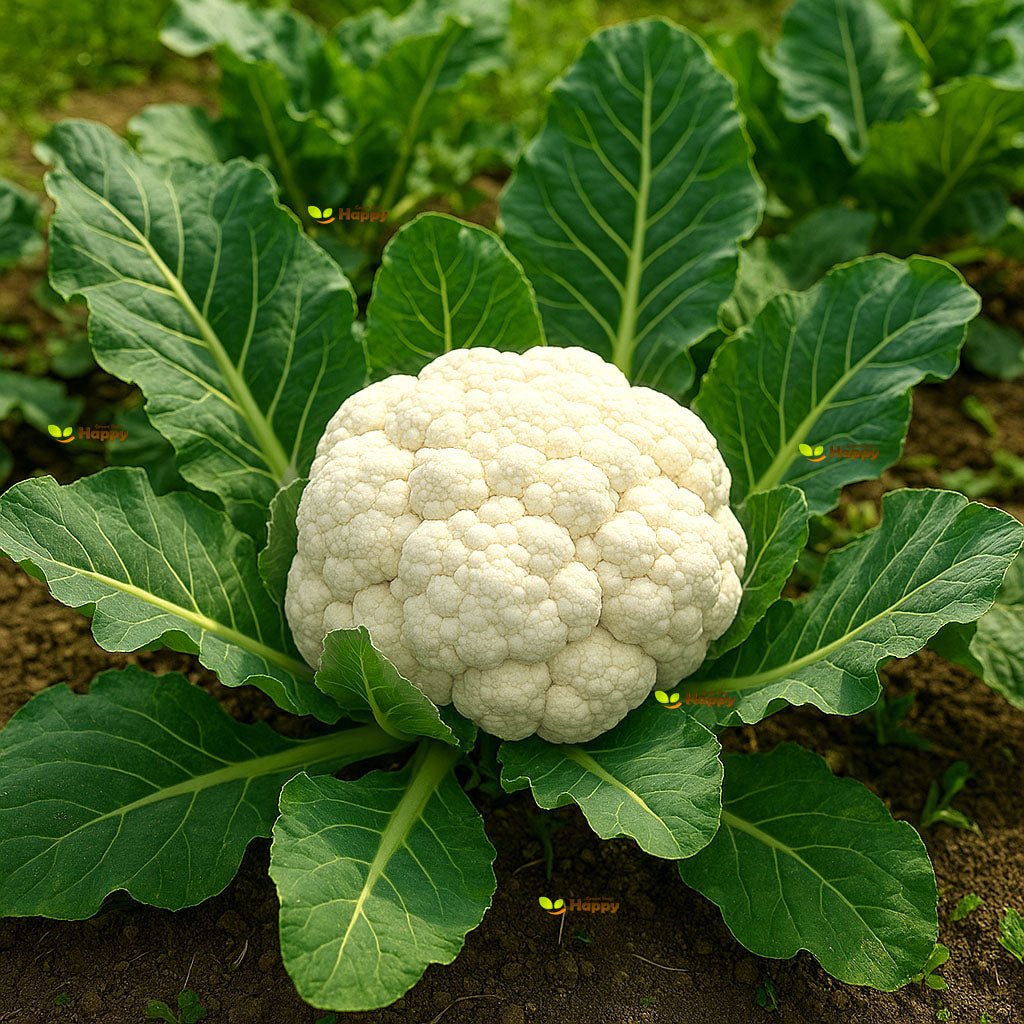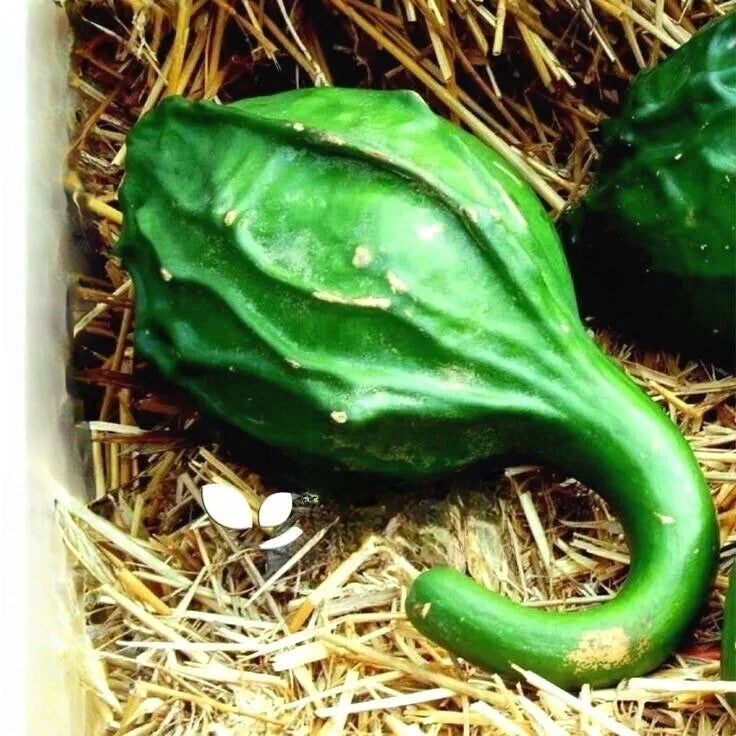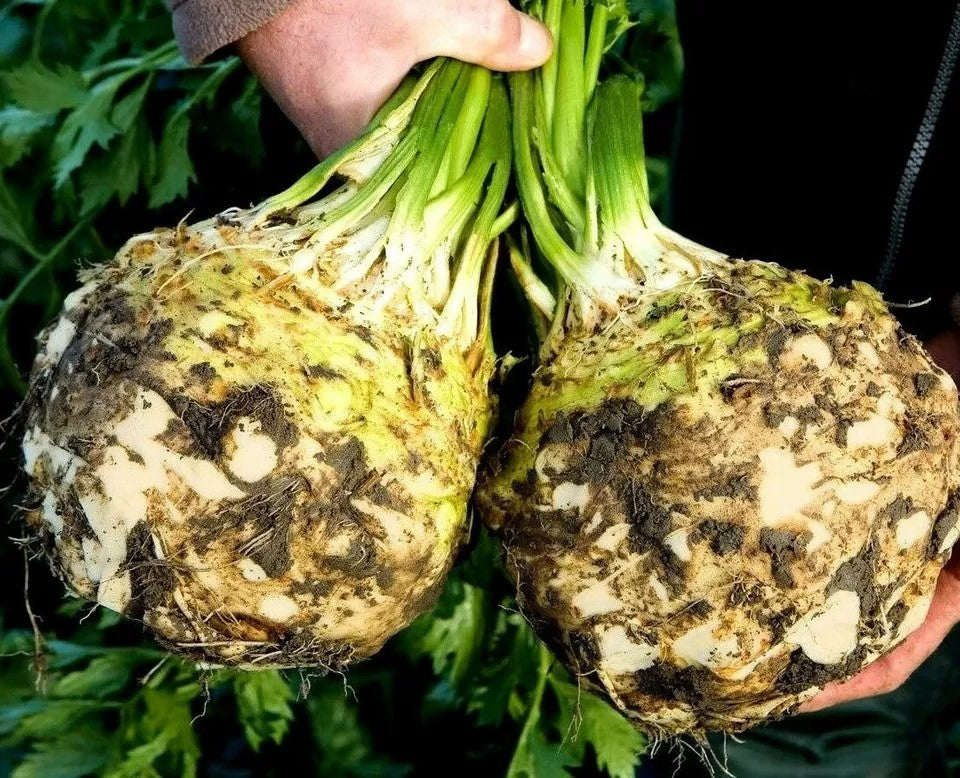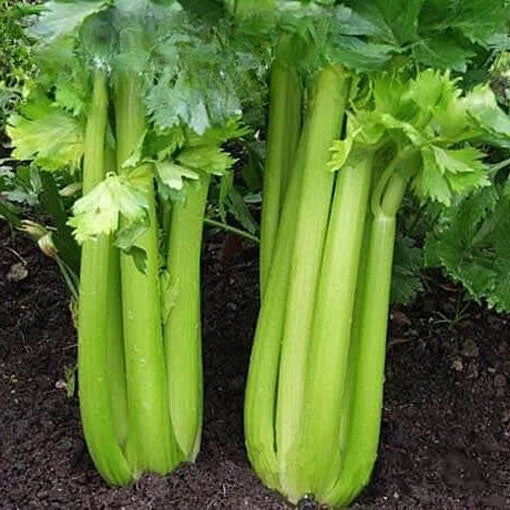Sort by:
1113 products
1113 products
Cauliflower 'Romanesco Natalino' – Seeds (Brassica oleracea)
Cauliflower ‘Romanesco Natalino’ is an extraordinary Italian heirloom, admired for its striking spiral, lime-green heads with a unique fractal pattern. More than just a showpiece, this variety is nutritious, delicious, and versatile – offering a slightly nutty, delicate flavor that works well roasted, steamed, or enjoyed raw in salads. Highly ornamental yet productive, it’s a standout addition to any vegetable garden.
How to Grow
-
Sow indoors: February – May in seed trays or pots.
-
Sow outdoors: May – June, directly into well-prepared soil.
-
Transplant: Harden off young plants and set them 60 cm apart in fertile ground.
-
Position: Full sun, rich, firm soil with good drainage.
-
Care: Keep soil consistently moist and protect young plants from pests.
Key Features
-
Stunning lime-green spiral florets
-
Mild, nutty flavor – more delicate than standard cauliflower
-
Traditional Italian variety
-
Attractive and productive crop
Ideal For
-
Kitchen gardens and allotments
-
Chefs and home cooks looking for something unique
-
Roasting, steaming, or eating raw
-
Eye-catching centerpiece in vegetable beds
Sowing & Harvest
-
Sow: February – June
-
Harvest: September – November
Quick Tip
For the best curds, ensure consistent watering and feed with a high-potassium fertiliser as heads develop.
Cauliflower 'Delta' – Seeds (Brassica oleracea)
Cauliflower 'Delta' is a high-yielding, early-maturing variety producing large, compact, creamy-white heads. Its tender curds and mild flavor make it ideal for steaming, roasting, soups, or fresh in salads.
Reliable and easy to grow, 'Delta' thrives in both home gardens and allotments, offering consistent quality and excellent resistance to common diseases.
How to Grow
-
Sow indoors: February – April
-
Transplant outdoors: April – June
-
Depth: 0.5–1 cm
-
Spacing: 40–50 cm between plants, rows 60–70 cm apart
-
Position: Full sun, sheltered from strong winds
-
Soil: Fertile, well-drained, rich in organic matter
-
Watering: Keep soil consistently moist, avoid water stress
Key Features
-
Early-maturing variety with large, compact, creamy-white heads
-
Mild, tender flavor perfect for steaming, roasting, and soups
-
High-yielding and reliable growth
-
Excellent resistance to common cauliflower diseases
-
Suitable for home gardens, allotments, and small-scale cultivation
Harvest
-
Harvesting period: June – September
-
Pick heads when compact and firm for best flavor and storage.
Short Tip
Tie outer leaves over the developing heads to protect from sunburn and maintain whiteness.
Cauliflower 'Octavian' – Seeds (Brassica oleracea)
Cauliflower 'Octavian' is a reliable mid-season variety producing large, firm, creamy-white heads with a mild, delicate flavor. Ideal for steaming, roasting, soups, and gratins, it is a versatile addition to any vegetable garden.
This hardy variety performs well in a range of soils, offers excellent disease resistance, and is suitable for home gardens, allotments, and small-scale cultivation.
How to Grow
-
Sow indoors: February – April
-
Transplant outdoors: April – June
-
Depth: 0.5–1 cm
-
Spacing: 40–50 cm between plants, rows 60–70 cm apart
-
Position: Full sun, sheltered from strong winds
-
Soil: Fertile, well-drained, rich in organic matter
-
Watering: Keep soil consistently moist for optimal head development
Key Features
-
Mid-season cauliflower with large, firm, creamy-white heads
-
Mild, tender flavor suitable for steaming, roasting, soups, and gratins
-
High-yielding and reliable growth
-
Excellent disease resistance
-
Ideal for home gardens, allotments, and small-scale cultivation
Harvest
-
Harvesting period: July – September
-
Harvest heads when compact and firm to ensure the best flavor and texture.
Short Tip
Blanch the heads by folding outer leaves over them to maintain whiteness and protect from sunburn.
Cauliflower 'Snowball X' – Seeds
(Brassica oleracea) – Classic White Curds, Reliable & Early
Cauliflower 'Snowball X' is a high-yielding, early-maturing variety known for its compact, snow-white curds and uniform growth. Its tender, mild-flavored heads make it perfect for fresh eating, steaming, roasting, and soups. A reliable choice for home gardens and small-scale growers.
Key Features
-
Type: Biennial, grown as annual
-
Heads: Compact, dense, snow-white
-
Flavor: Mild, tender, sweet
-
Harvest: Early to mid-season
-
Use: Fresh cooking, steaming, roasting, soups, freezing
Ideal For
-
Home gardens & allotments
-
Early harvesting for fresh consumption
-
Succession planting for continuous supply
-
Culinary use and freezing
Sowing & Growing
-
Sow indoors: February–April, transplant seedlings after 4–6 weeks.
-
Sow outdoors: March–May for late summer harvest.
-
Spacing: 45–60 cm between plants, 60–70 cm between rows.
-
Soil: Fertile, well-drained soil enriched with compost.
-
Harvest: When heads are compact and fully formed, before they start to separate.
Care Tips
-
Keep soil evenly moist to prevent splitting.
-
Protect young plants from pests with netting if necessa
Cauliflower ‘All The Year Round’ – Seeds (Brassica oleracea)
Description:
Enjoy reliable harvests with Cauliflower ‘All The Year Round’ (Brassica oleracea), a versatile and hardy variety suitable for spring, summer, and autumn cropping. It produces compact, white heads with excellent flavor and texture, ideal for steaming, roasting, or use in soups and casseroles. Easy to grow from seed, this dependable cauliflower performs well in most soils and weather conditions, making it perfect for home gardens and allotments.
Key Features
-
Reliable, hardy variety for multiple seasons
-
Compact, firm white curds with great flavor
-
Suitable for spring, summer, and autumn harvests
-
Tolerant of varying weather conditions
-
Easy to grow from seed
Ideal For
-
Home and kitchen gardens
-
Allotments and vegetable plots
-
Fresh cooking, freezing, and preserving
-
Year-round vegetable production
Sowing & Growing
-
Sow Indoors: January–April
-
Sow Outdoors: March–June
-
Transplant Outdoors: April–July
-
Germination: 7–14 days at 15–20°C
-
Spacing: 45–60 cm apart
-
Light: Full sun
-
Soil: Fertile, firm, well-drained
Care Tips
-
Water regularly, especially during dry periods
-
Protect young plants from pests and frost
-
Add compost or organic matter before planting
-
Harvest when heads are firm and white
Caveman’s Club Gourd – Unique Club-Shaped Ornamental Gourds
The Caveman’s Club Gourd (Lagenaria siceraria) produces large, club-shaped gourds with a striking, rustic appearance. Perfect for autumn décor, crafting, and garden displays, these unusual gourds are easy to grow and make a bold statement in any arrangement or DIY project.
What Makes It Special
-
Distinctive large club shape
-
Rustic, natural appearance
-
Long-lasting when dried
-
Ideal for creative décor and craft projects
Key Features
-
Vines can grow up to 6 m
-
Annual – grown for ornamental fruit
-
Harvest in late summer to autumn
-
Stores well for months after drying
-
Thrives in warm, sunny conditions
Ideal For
-
Autumn and seasonal décor
-
Large-scale craft projects
-
Garden displays and statement pieces
-
DIY birdhouses, containers, or artistic projects
Sowing
-
Sow indoors 3–4 weeks before last frost or direct after frost risk passes
-
Plant seeds 2–3 cm deep
-
Germination: 7–14 days at 20–25°C
-
Space 120–150 cm apart in full sun, fertile soil
-
Provide trellis support for climbing vines
Celeriac ‘Albin’ – Seeds (Apium graveolens)
Celeriac ‘Albin’ is a dependable variety producing smooth, round roots with creamy white flesh and excellent flavor. Known for its tender texture and mild, nutty taste, this versatile root vegetable is perfect for mashing, roasting, soups, and salads. A slow-growing but hardy crop, it thrives in cooler climates and stores well through winter.
How to Grow
-
Sow indoors: February – April in trays or modules at 18–20°C.
-
Transplant outdoors: May, spacing 30 cm apart in rows 40 cm apart.
-
Prefers fertile, moisture-retentive soil in full sun.
-
Keep well-watered during dry spells to encourage large, smooth roots.
Key Features
-
Smooth, round roots with white flesh
-
Nutty, mild flavor for versatile cooking
-
Good storage qualities for winter use
-
Reliable variety for cool climates
Ideal For
-
Mashing, roasting, and soups
-
Winter storage and seasonal dishes
-
Home gardens and allotments
Sowing & Harvest
-
Sow: February – April
-
Harvest: October – December
Quick Tip
Remove side shoots during the season to focus the plant’s energy on swelling the root.
Celery ‘Utah’ Seeds (Apium graveolens var. secalinum)
Grow crisp, tender stalks with Celery ‘Utah’ (Apium graveolens var. secalinum). This reliable variety produces tall, smooth, green stems with a fresh, mild flavor, perfect for salads, soups, and stews. Known for its disease resistance and consistent quality, it’s a favorite for home gardeners and a must-have in the kitchen garden.
How to Grow
-
Sow seeds indoors 8–10 weeks before the last frost.
-
Use moist, fertile, well-drained soil in full sun.
-
Sow seeds thinly on the surface, pressing gently without covering deeply.
-
Keep soil consistently moist; germination may take 14–21 days.
-
Transplant seedlings outdoors after frost, spacing 25–30 cm apart.
-
Harvest stems when they reach full size but remain crisp.
Key Features
-
Produces tall, smooth, green stalks
-
Crisp texture with a mild, refreshing flavor
-
Excellent for soups, stews, and salads
-
Strong, reliable, and disease-resistant variety
-
Perfect for home gardens and allotments
Ideal For
-
Fresh salads, cooking, and soups
-
Vegetable gardens, allotments, and raised beds
-
Gardeners who want a reliable, easy celery variety
-
Continuous harvesting through the season
Sowing
-
Best time: Indoors 8–10 weeks before last frost
-
Depth: Surface sow, cover lightly
-
Spacing: 25–30 cm apart
-
Prefers full sun and fertile, moist soil
Quick Tip
-
Water regularly and mulch around plants to keep soil cool and prevent stems from becoming tough or stringy.
Celery 'Westland' – Seeds (Apium graveolens)
Celery 'Westland' is a vigorous, reliable variety that produces tall, crisp, and succulent stalks with a mild, aromatic flavor. It is well-suited for both home gardens and market growing, offering consistent yields of high-quality stems. Perfect for use in salads, soups, stews, or as a fresh crunchy snack.
This variety has excellent disease resistance and strong growth, making it one of the most dependable choices for gardeners looking to grow celery successfully.
How to Grow
-
Sow indoors: February – April
-
Transplant outdoors: May – June after hardening off
-
Depth: Surface sow and cover very lightly
-
Spacing: 25–30 cm apart in rows 30–40 cm apart
-
Position: Full sun, sheltered site
-
Soil: Moist, fertile, well-drained with plenty of organic matter
-
Watering: Keep soil consistently moist
Key Features
-
Produces tall, crisp, and aromatic stalks
-
Excellent for fresh eating, cooking, and juicing
-
Strong disease resistance and reliable yields
-
Ideal for home gardeners and allotments
-
Suitable for summer and autumn harvests
Harvest
-
Harvesting period: August – October
-
Cut stems as required for fresh use.
Short Tip
Keep soil consistently moist to prevent celery from becoming tough or stringy.
Showing 207/1113




